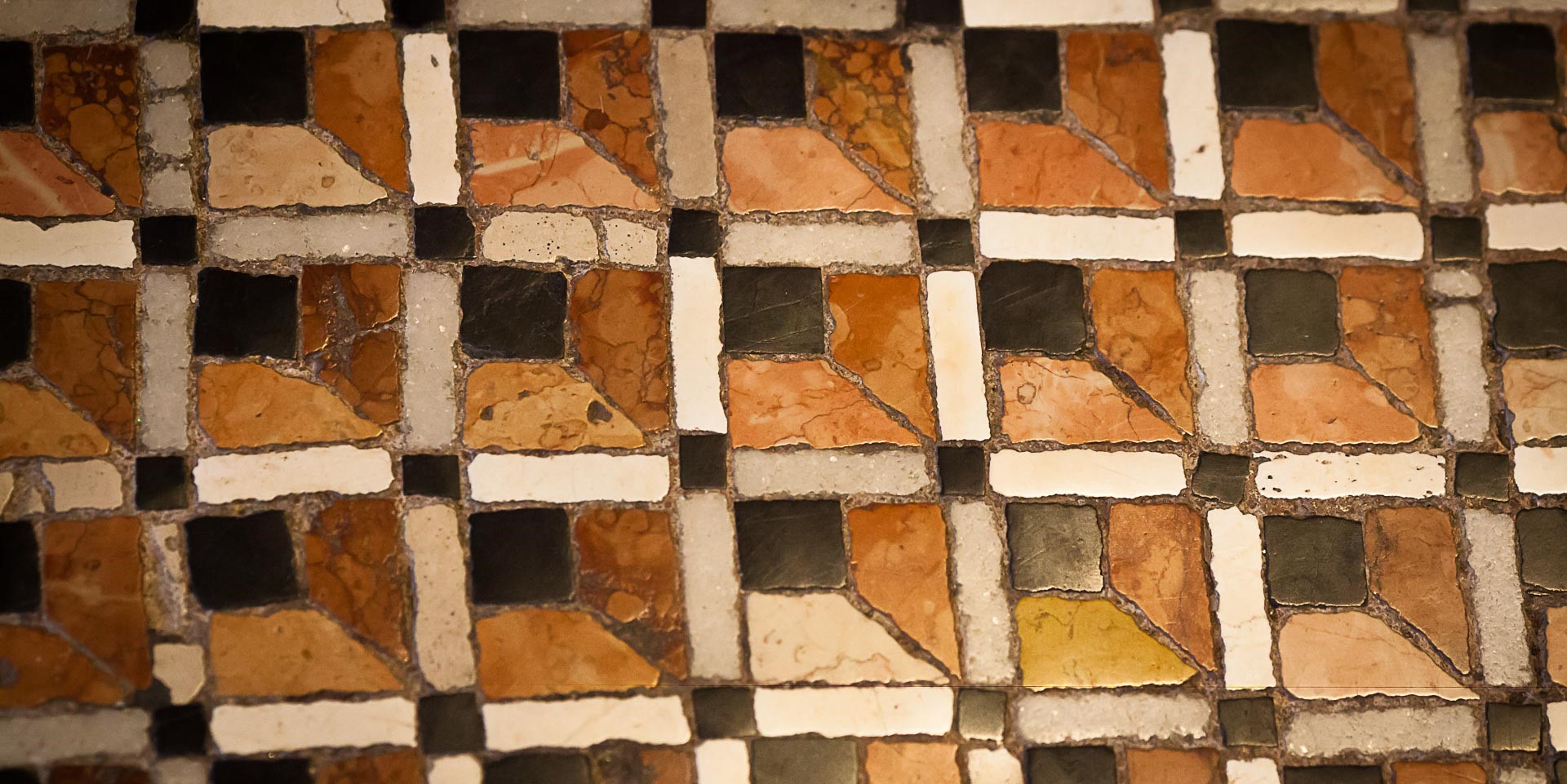by Bruno Manfredini
With this book, Marco Lazzarato revives the tradition of repertories, which were widespread until the middle of the last century, collecting ornamental motifs from works of art of all periods and making them available to artists and scholars. The most important example is The Grammar of Ornament, the monumental collection published by Owen Jones in 1856, at the height of the Victorian era and in the wake of the newly born Great Exhibitions. At the time, there were two publishing models to be followed: either to anthologise the ornamental motifs of all periods and countries in chronological order (as was the case with Jones’s book), or to privilege the particular point of view of the author, presenting his original inventions in a given field, from marbles to textiles, from wallpaper to typography.
Lazzarato chooses a third way, studying around ninety ornamental motifs in a highly significant location: the floor of St Mark’s Basilica in Venice. And he pursues an ambitious, long-term didactic, pragmatic and philosophical at the same time. Pragmatic because he minimises the written instructions, forcing the reader to look carefully at the images (not photographs, but graphic diagrams that highlight the Marcian geometries and make them clearly legible) in order to deduce the ways in which they can be reproduced or new ones produced. Philosophical because it becomes immediately clear that deciphering, understanding and creating an ornamental motif is not a game, or if it is, it is a very serious game: a profound act of knowledge that goes to the very heart of what we call “art”.
Between the lines of Lazzarato’s succinct remarks, one senses the ability to use all the tools without ever losing sight of the overall process, learning to compose individual problems into a unified vision, supported by an all-encompassing grid that rationalises the work. But here the explanations stop and the author leaves it to the reader to scrutinise, speculate and understand, becoming increasingly autonomous.
Another aspect of the book (most evident in the preface signed by Terenzio Zanini, but also present in Lazzarato’s text) concerns the deontological aspects of “good”, harmoniously structured form, which all too often seems to be humiliated in today’s design culture. The result is a loss of identity and competitiveness for all those productive districts that, out of excessive caution or laziness, prefer not to deal with it. The solution proposed here is that of a cultural and entrepreneurial strategy aimed at re-alphabetizing the system, starting with those who imagine and design form.
The book: M. Lazzarato, Le geometrie di San Marco. Le strutture compositive del pavimento della basilica, Tab edizioni, Rome 2024, pp. 130, euro 30.
Homepage; detail of a trompe-l'oeil floor mosaic, 11th century, Venice, St Mark's Basilica.
Below; the book cover.



